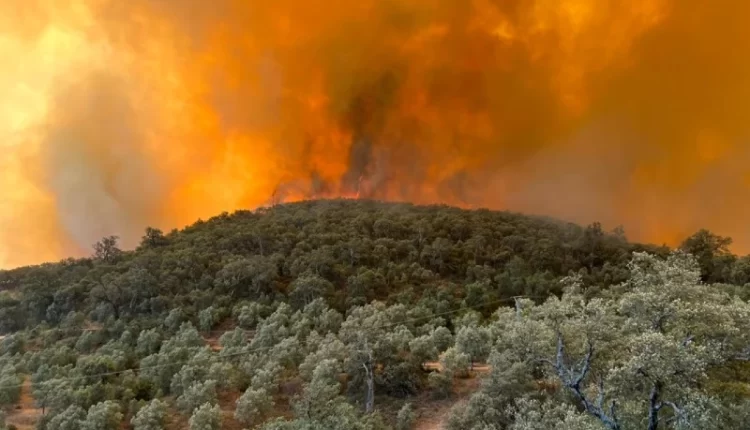Since the start of spring, Morocco has been experiencing a substantial heat wave, with historically high April temperatures across the Kingdom.
continuous heat waves with temperatures above 40 degrees since the end of March 2023.
The sequence of intense heat waves in record numbers also anticipates a season of forest fires, the likes of which have already plagued Morocco’s northern neighbor Spain. In addition to the agricultural devastation, the effects of which are anticipated to impair spring crops.
Morocco is anticipating exceptionally warm weather in the first two weeks of May, with temperatures ranging between 38 and 43 degrees Celsius, according to the General Directorate of Meteorology.
In addition to the fire risk, a recent study from The Lancet medical journal found that Morocco currently faces a significant risk of heat-related mortality, with 250 deaths attributed to high temperatures annually.
According to the report “Current and Future Trends in Heat-related Mortality in the Middle East and North Africa Region,” Morocco’s rate of heat-related deaths ranges between 0 and 93 per 100,000 people.
With 2,591 annual deaths, Egypt topped the list of Middle Eastern and North African nations.
According to the report, in a high emissions scenario, the average number of heat-related deaths will rise by 123.4 per 100,000 people annually throughout the Middle Eastern and North African countries between the years 2081-2100.
The study predicts that Arab nations along the Persian Gulf will have the biggest relative annual increases, with particularly significant shifts anticipated during the past 50 years.
According to the report, Saudi Arabia might experience a 13-fold rise in heat-related deaths even under the low emissions scenario.
Between 2021 and 2100, the largest effects will be felt in Iran, which now has the highest rate of heat-related mortality. Additionally, rates will be high in Israel, Iraq, and Palestine.
However, despite their prosperity in comparison to other Middle Eastern and North African nations, it is the smaller Arab republics of the Persian Gulf (Qatar, Oman, the Gulf states, and the United Arab Emirates) that will experience the highest increase in heat-related death rates compared to their existing rates.
By 2060, much of the region is anticipated to undergo significant warming, with North Africa and the Arabian Peninsula experiencing the most warming.
Although some coastal regions along the Arabian Peninsula would experience a rise in relative humidity, the study concluded that the anticipated changes across the Middle East and North Africa region are not significant.
Read Also: Prostitution scandal in Marrakech rocks French Diplomatic community


